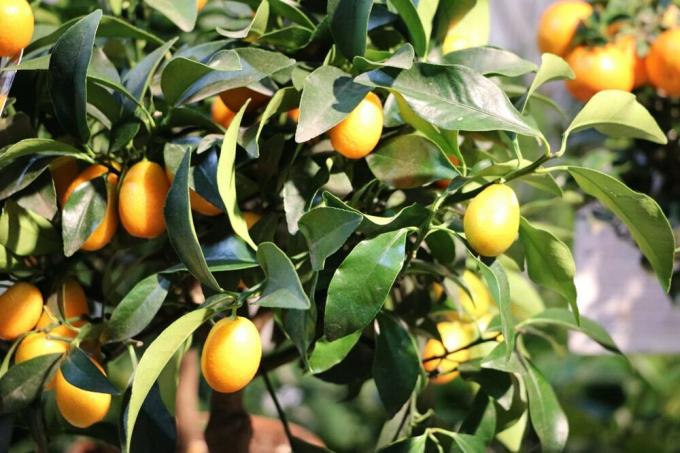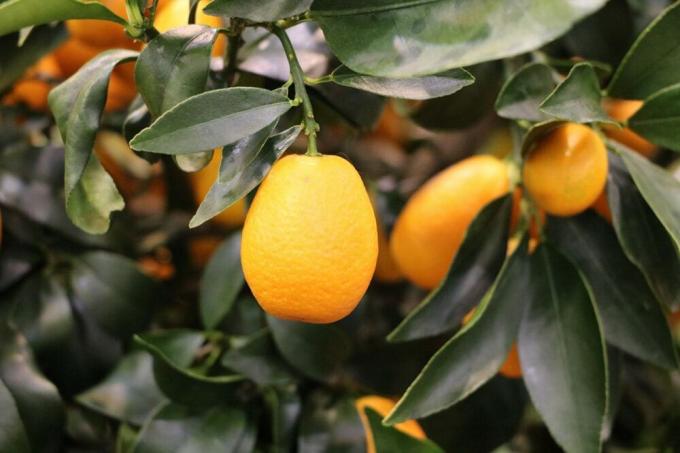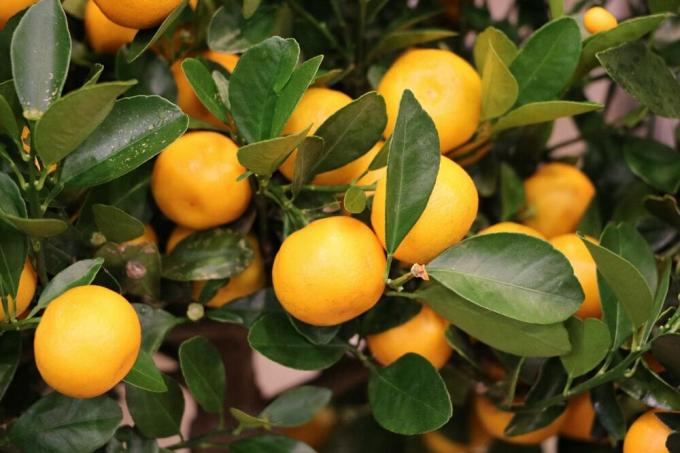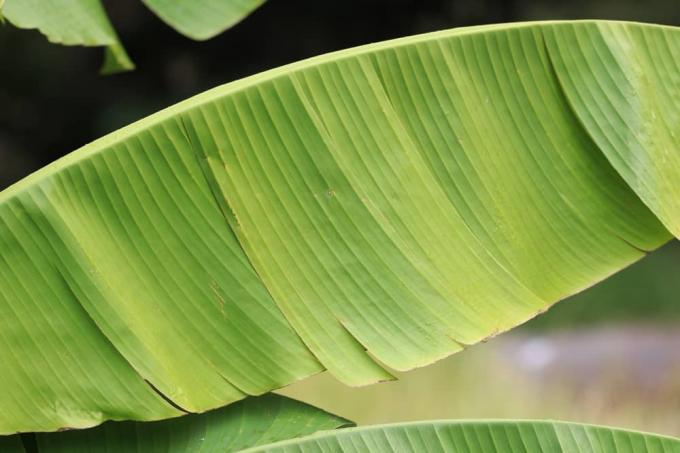

Table of contents
- rearing
- Propagation from seeds step by step
- Propagation from cuttings
- Propagation from cuttings step by step
- Location
- Recommendation for the summer
- hibernate
- Recommendation for the winter
- substrate
- repot
- Repotting: How to do it
- Pour
- Tips for optimal watering in summer
- Tips for optimal watering in winter
- Fertilize
- Cut
- pests and diseases
- damage and its causes
- Conclusion
Calamondin oranges are easy to care for. As a Mediterranean adornment, they adorn rooms and conservatories and enhance terraces and gardens. The popular citrus stems can stand outdoors from May to October. The dwarf orange has its main bloom in the spring weeks. If the plant hibernates bright and warm, the flowering shifts to summer and even to autumn. White flowers contrast beautifully with the glossy green foliage. Citrus mitis calamondin orange bears plenty of fruit, which is also highly decorative.
rearing
Citrus mitis calamondin orange can be grown from the seeds of a ripe fruit. The plants that grow in this way grow vigorously and form leaves and flowers. The only problem is with the fruit. Most dwarf oranges that are grown from pits do not form fruit or only set fruit late and sparsely. In addition, home-grown plants tend to go wild. Then they get thorns. Despite these limitations, the development from the mature seed to the complete plant is an exciting process and therefore worth trying.
Propagation from seeds step by step
- Remove seeds from ripe fruit
- clean and dry well
- bring two centimeters deep into the seed tray with seed soil
- Moisten seed substrate
- Cover bowl with clear foil
- the resulting microclimate is evenly moist and promotes germination
- Propagation bowl must be warm, but not too sunny
- Germination begins after about seven weeks
- repot when the plant is about eight centimeters tall
- alternatively: the plant already has three to four leaves
- loose and slightly acidic soil is suitable
- mix potting soil with clay granules
- bright location is optimal
- Keep substrate moderately moist
Propagation from cuttings
If Citrus mitis Calamondin-Orange is to develop optimally and bear fruit later, propagating the plant from cuttings is a safe method. This approach is usually crowned with success because the calamondin orange forms good roots.
Propagation from cuttings step by step
- Put cuttings about 15 centimeters long in a pot with potting soil
- a moist mixture of equal parts peat and sand is ideal
- Place the planter bright, warm and shady
- Keep substrate moderately moist
- repot cuttings after sprouting
- a container with acidic compost is well suited
- recommended pH from 5 to 6.5
Tip:
Growing a dwarf orange works best in a warm and humid microclimate. To create this climate, the cutting should be covered with a transparent plastic bag at the beginning.
Location

Citrus plants love the light. A bright location in a room or in the conservatory is therefore ideal for the prosperous development of the calamondin orange. It can be left outdoors on a terrace or balcony when the night-time temperatures are above plus ten degrees Celsius. When the ice saints are over, the dwarf orange can go outside. There it prefers a sunny place that is sheltered from the wind and not bothered by draughts. Before the citrus trunk is allowed to go out in the sun, it needs a phase to get used to it. Otherwise its sensitive leaves will be damaged. After a few days when the plant is only allowed to stand in the sun for a few hours, the dwarf orange has adapted. Then she can enjoy the rays of the sun all summer day long.
Recommendation for the summer
- Outdoor space preferred as location
- Luminous efficiency is great here
- Core time extends from May to October
- can be extended to April and November if there is no frost
- upper parts of the plant like to be in the sun
- this does not apply to the roots
- therefore no blazing sun on black plant pots
- when the earth heats up, the roots lose activity
- Citrus mitis will wilt on inactive roots
- Loss of water from the leaves is not compensated
hibernate
If the temperatures in autumn fall below plus ten degrees Celsius at night, Citrus mitis calamondin orange is brought into the house. The citrus trunk can easily overwinter here. It should not be exposed to dry heating air immediately; a transitional period of a few days is appropriate. The calamondin orange does not have to be warm in winter. It prefers temperatures between five and ten degrees Celsius. The plant is dormant in the winter months. It does not need fertilizer and can be watered sparingly. However, the root of the plant must not dry out completely, even if the upper area of the root ball may be dry to the touch.
Recommendation for the winter
- the warmer the location, the more light is needed
- in the cool winter quarters, light from uncovered window panes is sufficient
- best facing south
- Temperature minimum briefly down to 0 °C
- Temperatures above 25 degrees limit root activity
- Partial shedding of leaves in dark places normal
- new shoots follow from April
Tip:
The calamondin orange should stand cool at night in winter so that the skin of the ripe fruit can turn orange. If left too warm at night, the inside of the dwarf orange will ripen, while the skin will remain green.
substrate
For Citrus mitis calamondin orange to thrive, the soil around its roots needs to be well drained and preferably slightly acidic. The dwarf orange needs a stable substrate for its good development. Because especially the older and large specimens of the calamondin orange stay in the same container for years.
A special citrus soil that has been loosened up and made permeable by many stony additives is therefore good for the dwarf orange. This can be admixtures of coarse sand, gravel or grit. Larger amounts of broken limestone or pieces of lava are also ideal as an additive for the soil. Pure peat or humus soil, on the other hand, is not recommended as a substrate.
repot
Citrus mitis calamondin orange does not necessarily have to be repotted every year. The decision as to whether the dwarf orange should be planted in a larger pot depends on the degree of root penetration in the pots. Only when the earth is completely criss-crossed by a fine network of roots and the plant has dwindled in the number of flowers does it need a new container. The diameter of the new habitat should be no more than two to five centimeters larger than the old vessel. If, on the other hand, there is still plenty of loose soil around the roots, it is worth waiting a bit before repotting.

The best time to put the calamondin orange in a new container is early spring. An opportunity to repot is not only available before the new shoots in March or April. The time up to July is also suitable. In the weeks that follow, however, you should refrain from repotting and rather wait until next spring. Otherwise the plant will not have enough time to sufficiently root through the fresh substrate. This leads to damage to the roots.
Repotting: How to do it
- Moisten the soil ball in the pot. To do this, dip the pot in a bucket of water.
- Alternatively: Wet the soil around the edges.
- Tilt the pot carefully to carefully loosen the roots and soil.
- Turn the roots and substrate out of the pot.
- Shake excess soil from the root ball.
- Partially fill the new planter with soil.
- Place the plant in a new container and fill up the substrate.
- Do not plant the tree deeper than in the old container.
- The top edge of the ball should be level with the edge of the pot.
- Fill in the potting soil.
- Press the plant down and water it lightly.
Pour
The calamondin orange has a special need for moisture. It should be watered regularly, even twice a day during very warm periods. However, the roots of the dwarf orange must not be constantly wet. A substrate that is too moist in the long term means that the very fine hair roots could decompose. However, the root ball of the plant should not dry out completely. On the contrary. Infrequent watering is one of the most common mistakes in citrus mitis care. The given amount of water must not be too small for the pouring passes.
The dwarf orange clearly shows errors when watering. If it is not watered enough, it will lose its leaves. Even if there is too much lime in the irrigation water, it sheds leaves and buds and consequently does not produce any fruit. The ideal irrigation water for the calamondin orange is stale and low in lime. It may best come from a rain barrel. A water filter is an alternative.
Tips for optimal watering in summer
- a dose of water a day
- in heat: twice
- a few minutes as intense as a heavy rain shower
- moisten soil to the bottom of the pot per pass
- a planter on feet is ideal
- here the plentiful irrigation water drains well again
- Waterlogging, which is harmful to the plant, is avoided
Tips for optimal watering in winter
- consistently slightly moist soil is optimal
- Substrate must never dry out
- check every second or third day
- Water when the soil is slightly dry
- Then moisten the soil to the bottom of the pot
Fertilize
Like all citrus plants, the calamondin orange has a high nutrient requirement. It must therefore be given regular fertilizer. Long-term fertilizers or liquid fertilizers for citrus plants are suitable as nutrients. These contain everything these plants need in terms of elements and minerals. In addition to boron and iron, these include copper and zinc manganese. A special citrus fertilizer with a mixing ratio of nitrogen (N), phosphate (P) and potassium (K) of 1 to 0.2 to 0.7 is ideal for supplying dwarf oranges with nutrients.
High-quality citrus fertilizers with up to 20 percent nitrogen, 4 percent phosphate and 14 percent potassium are best suited. The first annual portion of nutrients is given to the plant immediately after the first budding. After that, the citrus stems receive one dose of fertilizer per week during the growth phase between April and mid-October. If the fertilizer contains the high concentration of nutrients, half a liter per pass is sufficient. One liter of liquid fertilizer is required for good fertilizers with a ratio of 10 percent nitrogen to 2 percent phosphate to 14 percent potassium. If the nutrients are even less concentrated, the fertilizer doses must be multiplied accordingly.

Citrus mitis Calamondin-Orange is fertilized throughout the growing season, from spring to autumn. If the plant is in a heated and light-flooded conservatory, the period of growth can extend into November and even December. Even then, she still needs her nutrients. If dwarf oranges overwinter in rooms with less light, fertilizing should be stopped around the end of September. Then the formation of new leaves and shoots is stopped and the plant can rest.
Cut
The calamondin orange should be cut frequently and consistently. Then it stays nice and compact. If Citrus mitis is not cut, it does not lose its beauty. However, it does not develop as compactly as with regular pruning. In addition, the power of the plant goes directly into the fruit when cut. The crown is trimmed as soon as it starts to get slightly out of shape. This can also be during the summer months.
Each shoot is cut two to three millimeters above a leaf. A cut can also be made at a distance of two millimeters above a bud pointing to the outside of the crown. If major corrections are to be made on the crown right down to the old wood, late winter is the best time to do this. Then Citrus mitis has not yet sprouted again and is not damaged at the interface.
pests and diseases
Well cared for, regularly watered and properly fertilized, Citrus mitis calamondin orange develops its own natural defences. Stressed plants, on the other hand, are susceptible to pests. In summer they are attacked by spider mites. Scale insects attack in winter. In spring, aphids can tamper with the tips of the shoots.
A mixture of one liter of water with 20 milliliters of spirit and 15 milliliters of soft soap helps against aphids, scale insects and mealybugs. After spraying, the pests dry up, but their shells remain and must be removed.
Only sprays that are designated as acaricides help against spider mites. With this, the plant is sprayed abundantly. Attention: Never dose higher than stated on the package. Otherwise the leaves will be damaged.
damage and its causes
Yellow leaves: too shady location or too much lime in the irrigation water
falling buds and fruits: not enough water
Spider infestation on the lower side of the leaf: Humidity too low
Conclusion
The dwarf orange Citrus mitis enchants plant lovers with its Mediterranean appearance. The calamondin orange is even suitable for beginners. Because she does not place high demands on her care. With a little affection, the citrus stem will thrive in pots and tubs. The ideal location, good watering and the right fertilization ensure good growth. If the plant gets enough of everything, it thanks you with lush green leaves, wonderfully fragrant flowers and decorative fruits.
 garden editorial
garden editorial I write about everything that interests me in my garden.
Learn more about potted plants

Abalie, Abelia grandiflora: 14 tips for proper care
The large-flowered abalia (Abelia grandiflora) is an extraordinarily easy-care ornamental shrub that delights with numerous funnel-shaped and subtly scented flowers. It is just as suitable as a background plant as a hedge or container plant.

Caring for the tangerine tree properly | 13 tips for the tangerine tree
Many citrus plants have evolved from the tangerine, one of the oldest and most original citrus species. With its white flowers and orange fruits, it is a feast for the eyes and the palate. In this country it is only cultivated as a container plant due to its sensitivity to frost.

Indian canna, Canna indica | 13 tips for care
Canna indica, also known by the botanical name Canna indica, is a decorative plant that not only enriches every garden during flowering. In pot culture, it can be used as an accent for many years thanks to its color and growth.

11 absolutely hardy container plants
Absolutely hardy potted plants have several advantages to offer, because they can remain outdoors even when the temperature is below zero and require little protection. If they are also evergreen, they can also bring joy all year round.

Is dwarf bamboo hardy? | 11 tips for care & cutting
Dwarf bamboo is one of the easy-care sweet grasses. In the garden, it can be used as a good ground cover, as it does not grow as tall as its larger relatives. Whether the plant is hardy and how it is cared for and cut can be read in the guide.

Pink dwarf banana, Musa velutina | Care of the Kenya Banana
The pink dwarf banana (Musa velutina) is an eye-catcher in the garden. It grows to a maximum of two meters and impresses with its impressive flowers. The small pink fruits taste sweet and aromatic. If you want to harvest the exotic fruits, you should follow our care tips.



